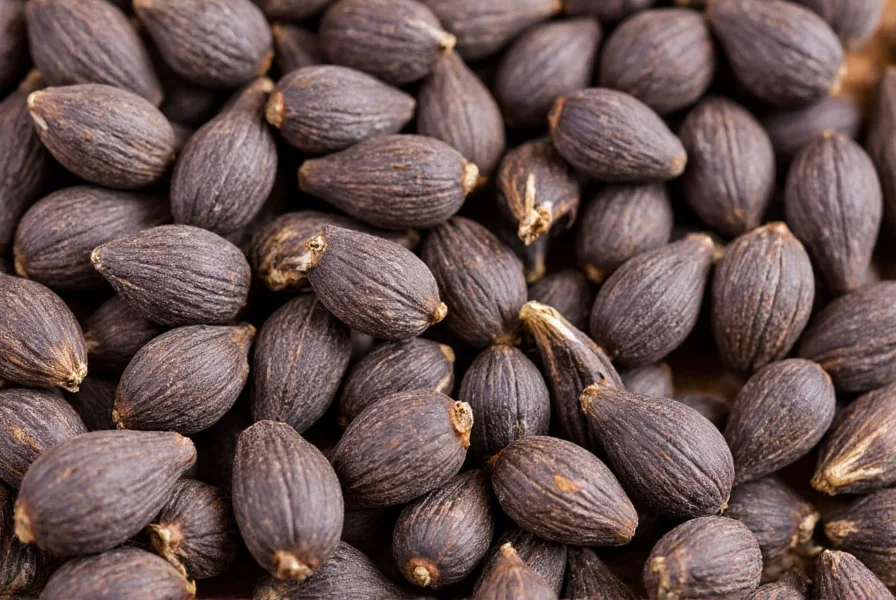Anise definition extends beyond its culinary applications to encompass its botanical identity, historical significance, and practical uses. This annual herb originates from the eastern Mediterranean and Southwest Asia, where it has been cultivated for over 4,500 years. The plant grows to approximately 2 feet in height, producing delicate white flowers and distinctive crescent-shaped seeds that contain 2-7% essential oil, primarily composed of anethole.

Botanical Classification and Characteristics
Scientifically classified as Pimpinella anisum, anise belongs to the same plant family as carrots, celery, and parsley. The plant features feathery leaves and produces small, oval seeds measuring 3-5 mm in length. These seeds develop their signature sweet, licorice-like aroma as they mature and dry. Unlike many spices, anise seeds contain no capsaicin or piperine compounds, deriving their distinctive flavor profile almost entirely from trans-anethole, which constitutes 80-90% of the essential oil.
Culinary Applications of Anise
Chefs and home cooks utilize anise seeds across global cuisines for their complex flavor profile. In Mediterranean cooking, anise features prominently in breads, pastries, and fish dishes. Mexican cuisine incorporates it into mole sauces, while Indian recipes use it in spice blends like panch phoron. The seeds work particularly well with fatty foods as the anethole compounds help cut through richness. Professional bakers often toast anise seeds before use to enhance their aromatic properties without developing bitterness.
| Characteristic | True Anise (Pimpinella anisum) | Star Anise (Illicium verum) |
|---|---|---|
| Botanical Family | Apiaceae (carrot family) | Schisandraceae |
| Plant Type | Annual herb | Perennial tree |
| Seed Appearance | Small, grayish-brown, curved | Star-shaped, reddish-brown |
| Primary Growing Regions | Mediterranean, Middle East | China, Vietnam |
| Shikimic Acid Content | Negligible | High (used in Tamiflu production) |
Medicinal Properties and Historical Uses
Historical records show ancient Egyptians using anise for digestive purposes as early as 1550 BCE. Modern research supports traditional uses, indicating anise seeds possess carminative properties that help reduce bloating and gas. The European Medicines Agency recognizes anise for treating mild digestive disorders and coughs. Unlike star anise, which contains significant shikimic acid, true anise's therapeutic benefits primarily derive from its essential oil composition. When preparing anise tea, experts recommend steeping 1-2 teaspoons of crushed seeds in hot water for 10 minutes to maximize extraction of beneficial compounds.

Storage and Selection Guidelines
For optimal flavor retention, select whole anise seeds with a uniform grayish-brown color and avoid any with signs of moisture or mold. Properly stored in an airtight container away from light, whole seeds maintain their potency for 2-3 years, while ground anise loses flavor within 6 months. Food scientists note that anise seeds reach peak aromatic intensity when harvested at precisely 80% seed maturity - a detail commercial producers monitor carefully. When substituting in recipes, remember that 1 teaspoon of anise extract equals approximately 2 tablespoons of seeds.
Frequently Asked Questions
What is the difference between anise and fennel?
While both belong to the Apiaceae family and share a licorice-like flavor, anise (Pimpinella anisum) and fennel (Foeniculum vulgare) are distinct plants. Anise seeds are smaller, rounder, and more intensely flavored than fennel seeds, which are larger, straighter, and milder. The plants themselves look different - anise grows as a delicate annual herb, while fennel develops into a larger perennial with feathery fronds.
Can you substitute star anise for anise seeds in recipes?
Yes, but with important considerations. One star anise pod generally equals 1 teaspoon of anise seeds, but star anise has a stronger, more complex flavor with subtle floral notes. In long-cooked dishes like stews or braises, star anise works well as a substitute, but in baking or quick preparations, you may need to use less to avoid overpowering other flavors. Remember they are botanically unrelated despite their similar taste profiles.
Is anise safe for children and pregnant women?
Whole anise seeds are generally considered safe in culinary amounts for most people, including children and pregnant women. However, concentrated anise extracts and essential oils should be avoided during pregnancy as they may stimulate uterine contractions. The American Pregnancy Association recommends limiting anise tea consumption to 1-2 cups daily during pregnancy. Always consult with a healthcare provider before using anise medicinally.
Why does anise taste like licorice?
The characteristic licorice flavor in anise comes primarily from a compound called trans-anethole, which constitutes 80-90% of its essential oil. This same compound appears in varying concentrations in other plants like star anise, fennel, and tarragon, creating similar flavor profiles. The human olfactory system detects anethole at extremely low concentrations (as little as 15 parts per billion), explaining why even small amounts of anise significantly impact a dish's flavor.










 浙公网安备
33010002000092号
浙公网安备
33010002000092号 浙B2-20120091-4
浙B2-20120091-4